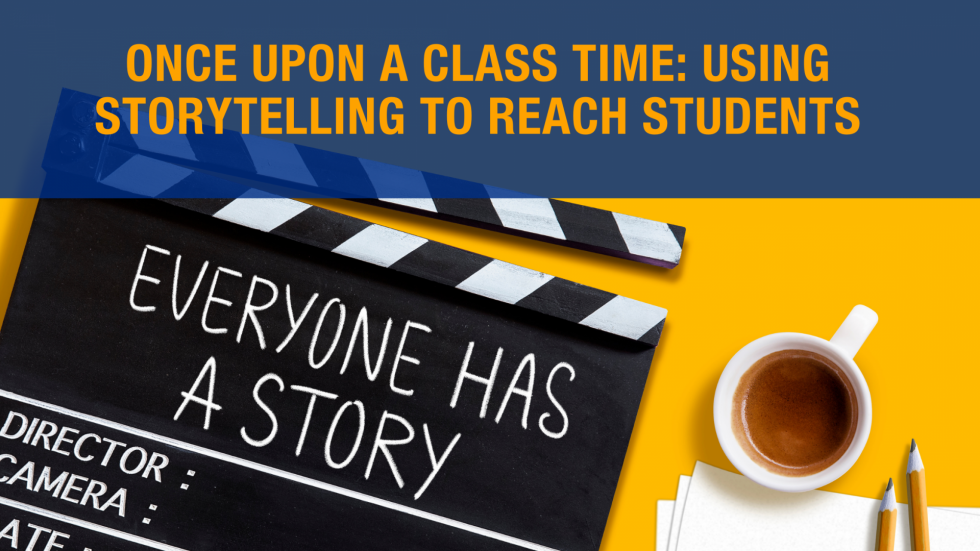Once Upon a Class Time: Using Storytelling to Reach Students
Prefer to listen? Check out the audio recording of this post instead.
“A 6-year-old boy carried his 8-year-old brother down two flights of stairs after he was shot,” Josh Bovill said in his 2023 Making Schools Work Conference session, “That Kid Has a Story…But So Do You: How to Use Your Story to Reach the Most Unreachable Kid.”
As he spoke, everyone in the room leaned in a little to hear the rest of this story. This was a story he knew well. After all, it was his.
During the session, Josh shared his story of growing up in poverty in a single-parent home where the single parent was a drug addict.
While support at home was not always present, Josh was not alone. He had teachers on his side.
- Ms. McClinton treated him like a little boy that needed to be loved.
- Coach and Ms. Tommie encouraged him and were there for him.
- Ms. Robinson, the guidance counselor, wouldn’t let him quit.
With people on his side helping him through his tough upbringing, Josh grew up to become a successful car salesman. Yet, there was something missing. As he reflected on his life, he asked himself, “What else can I do? I didn’t set out to change lives; I wanted to plant seeds.”
To do this, a career change was in order. So, Josh became a teacher.
| Side Note |
|---|
| At this moment in the session, Josh got a surprise: Sitting in the audience was his mentor teacher, Ms. Covington. When he was a first-year teacher, it was Ms. Covington who stepped up and supported him. Among emotional support for his new role, she also provided a notebook of lesson plans and modeled lessons for him to use in his own classes. It was a touching moment! |
Sharing Stories
Josh, who is a middle school teacher in South Carolina, believes that sharing your story allows you to create a place where your students feel comfortable sharing theirs.
To help facilitate this, Josh uses the first day of school each year to establish his classroom culture. He wants his students to understand that he cares about them, and that, while he can’t control what happens outside of class, he can control what happens in it. To do this, he shares his story with his students.
Stories help us connect and relate, and reflecting on them can often be a way to see what hardship has taught us. For example, Josh says that having to figure out how to get his older brother downstairs after he was shot helped show him that he is a problem solver and innovator.
There are many ways you can use storytelling in your classroom to better reach your students. Here are some storytelling activities that Josh shared in his session that help him get students sharing their own stories:
- Play Musical PresentAyyy. In the session, we played this game with the following steps, which you can modify for your class goals:
- When music begins playing, everyone walks around. When music stops, partner up with four or five people that are near you.
- Each person will introduce themselves and share:
- Why you went into education
- What obstacles you overcame to get to where you are
- When the music starts back, return to your seat for the debrief.
- Debrief: Why do you think I do this in my classroom? How can it be modified for your classroom? Did anyone share any common connections? What was I doing during the activity?
- Create a Storyboard. Sometimes Josh uses his story to connect to his students. He writes out his story and puts it up in the classroom. As they feel comfortable, students go up and add to the board. Here are some of the responses he has gotten in the past:
- “My mom was on drugs and now she is clean like yours.”
- “I passed my math test and I don’t know how.”
- “I did like school until my dad died last year. He always helped me.”
When students feel comfortable sharing their stories, it will help you help them.
Final Thoughts
At the end of the session, Josh shared a video of his mom, who shared her own story and spoke about being sober and how proud she is of Josh.
Everyone has a story, and being there for your students and encouraging them to connect through their stories can make a huge difference in their lives. Josh’s final advice is to remember something very important:
“When you try to reach kids – poor kids, African American kids, etc.” remember that “they don’t need different,” Josh said. “They need love.”
Don’t forget to sign up for our Promising Practices Newsletter to find more articles like this one.




